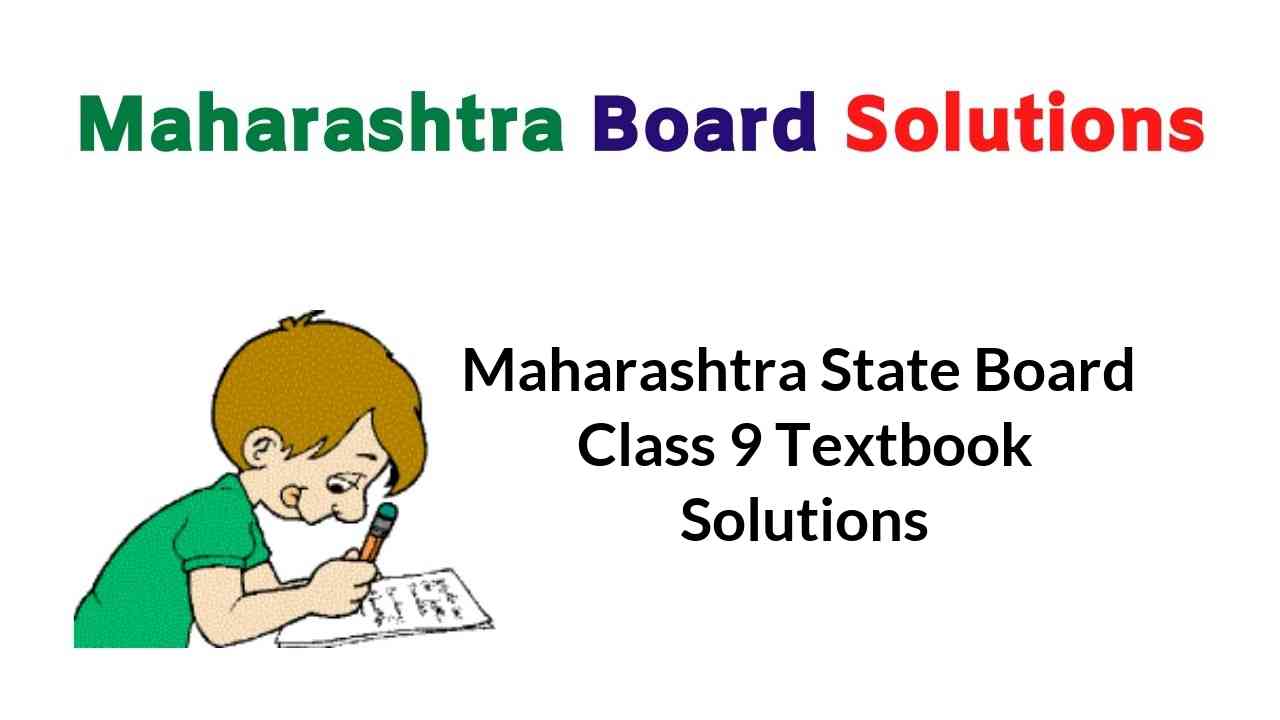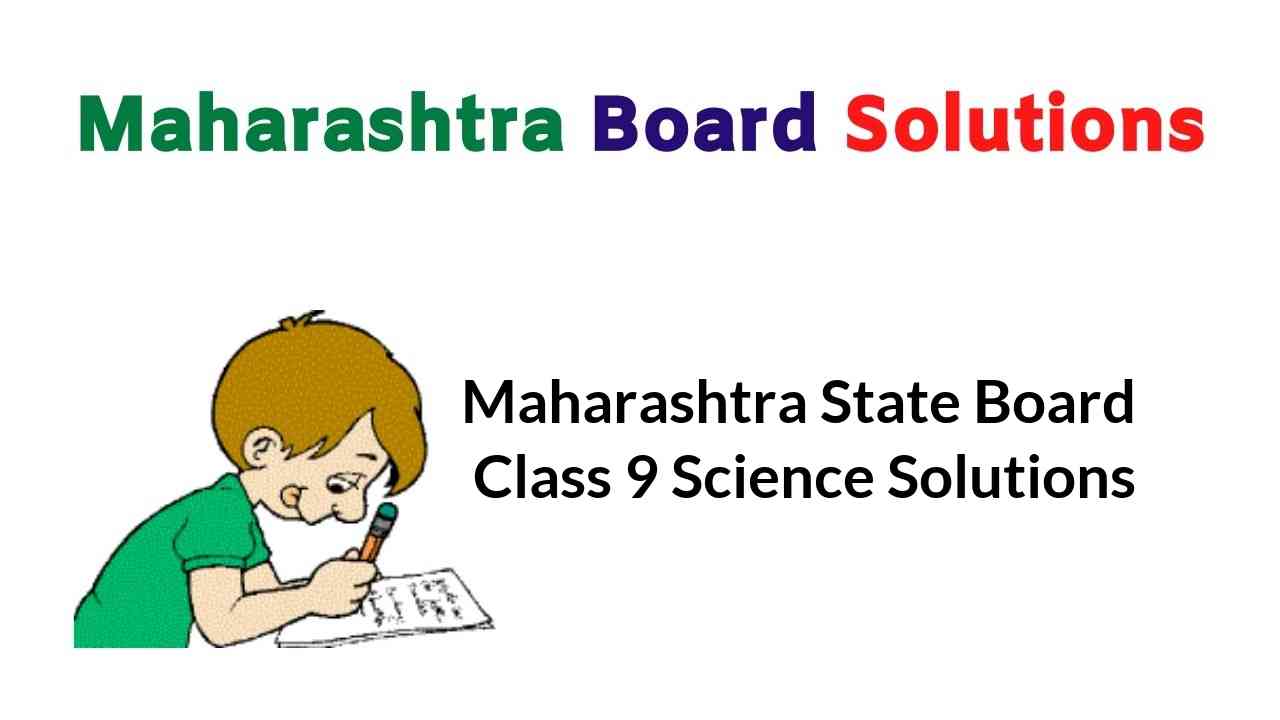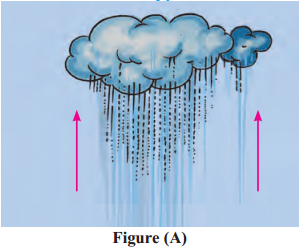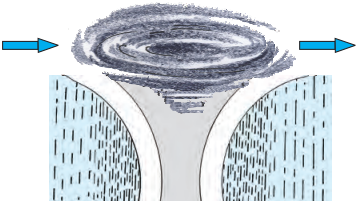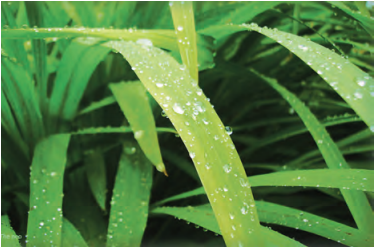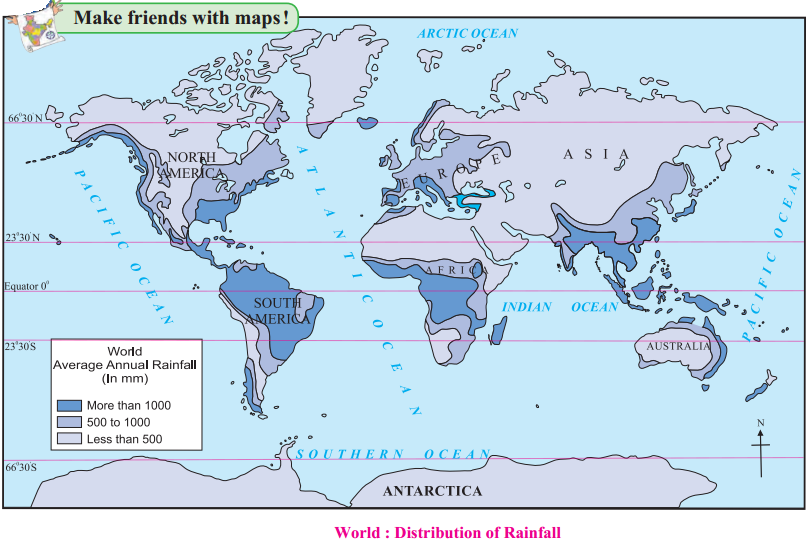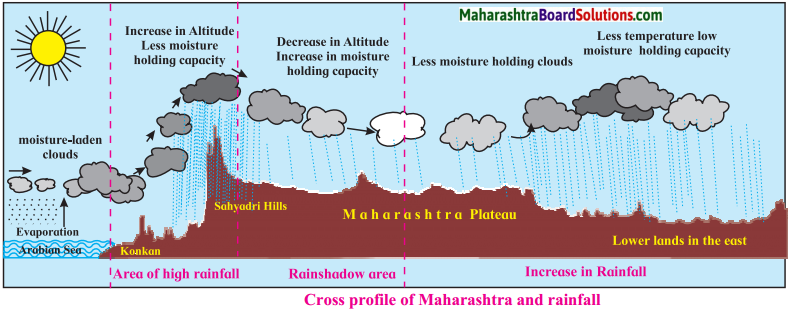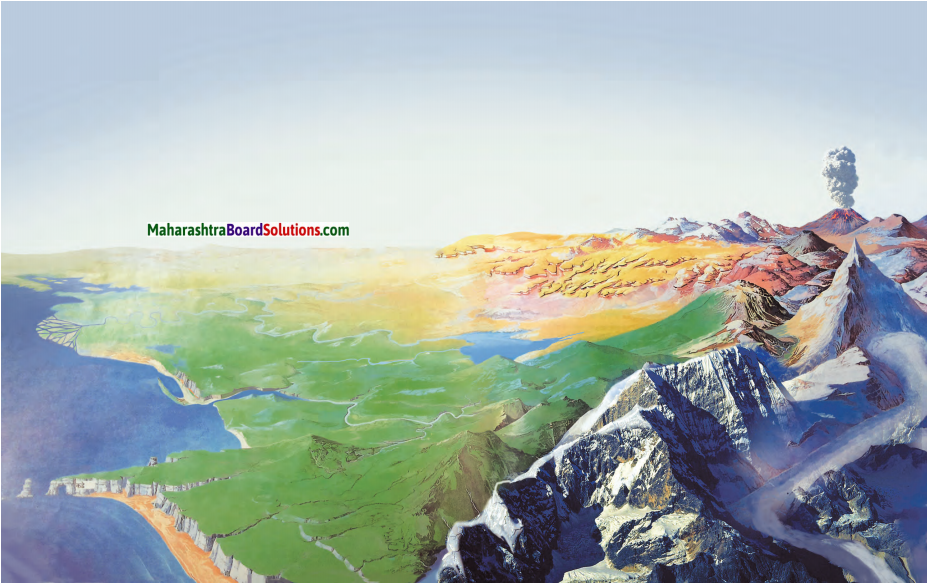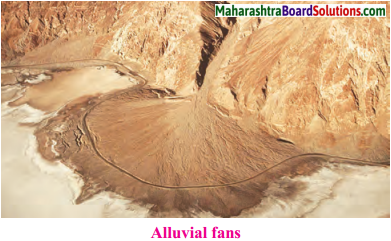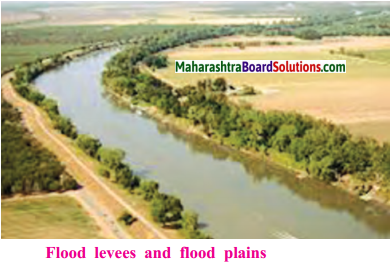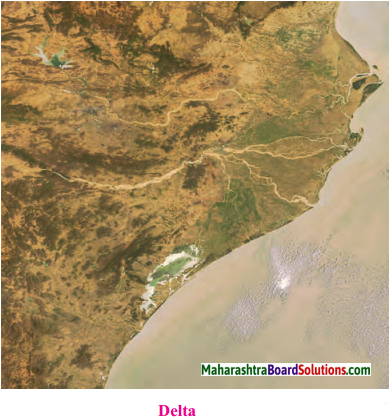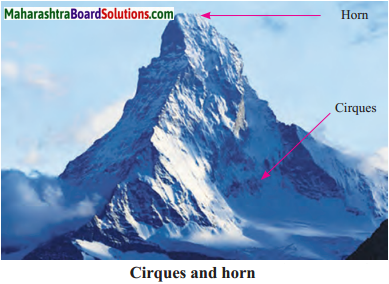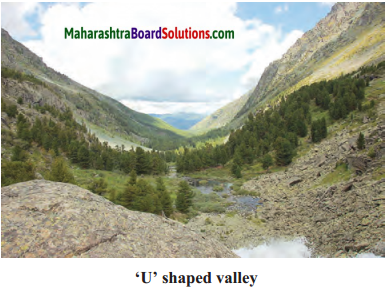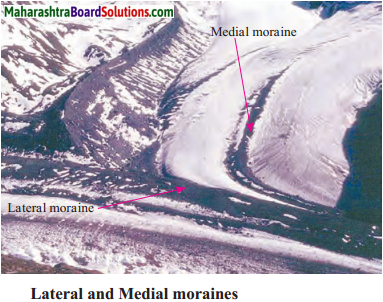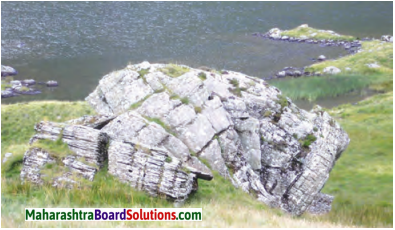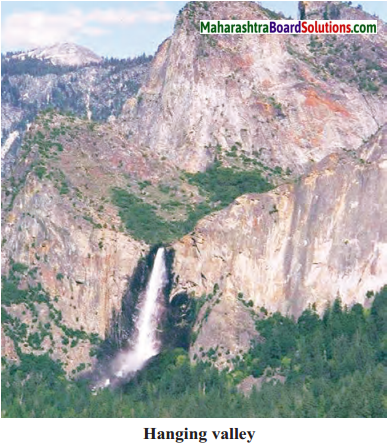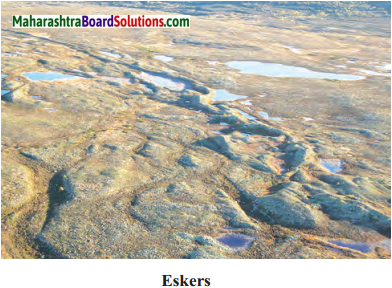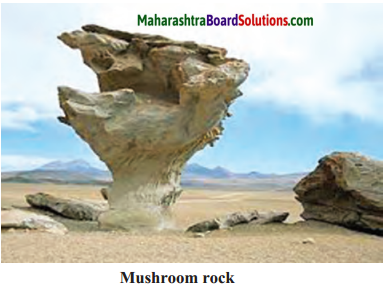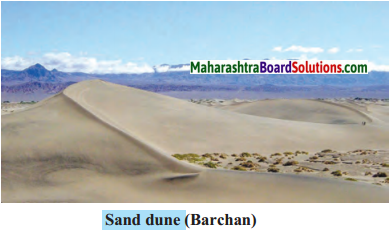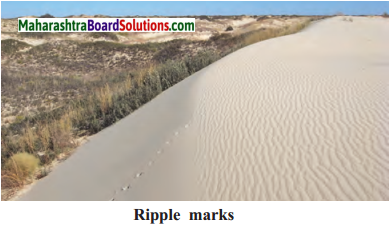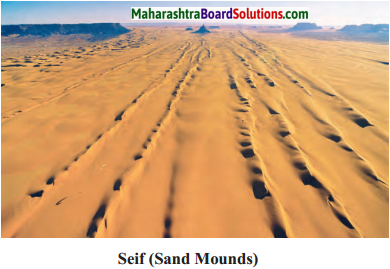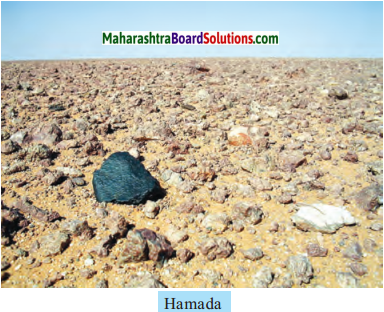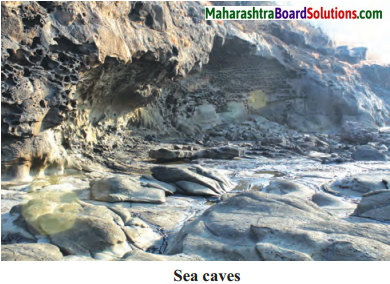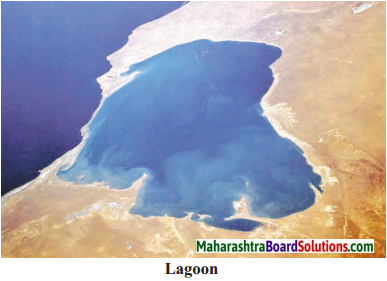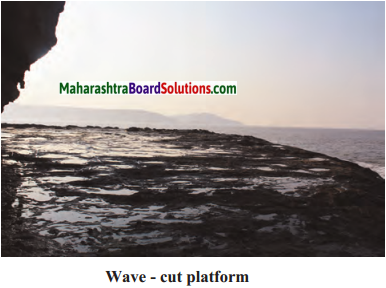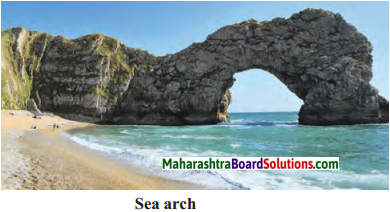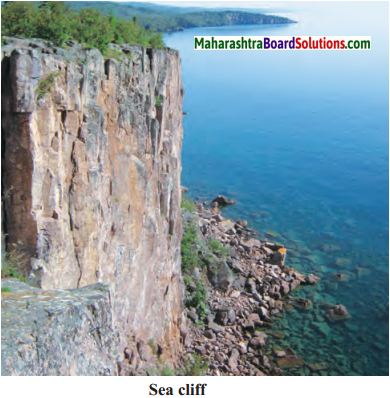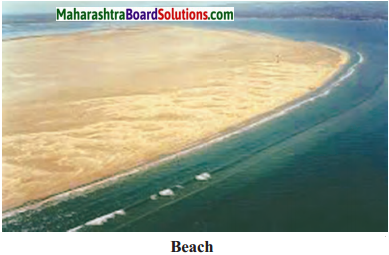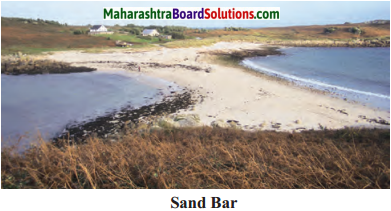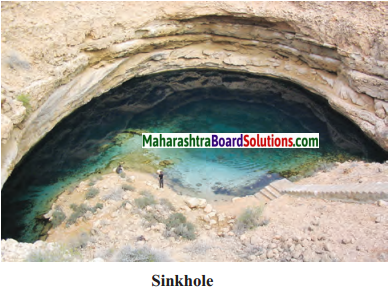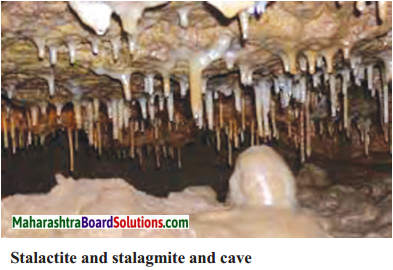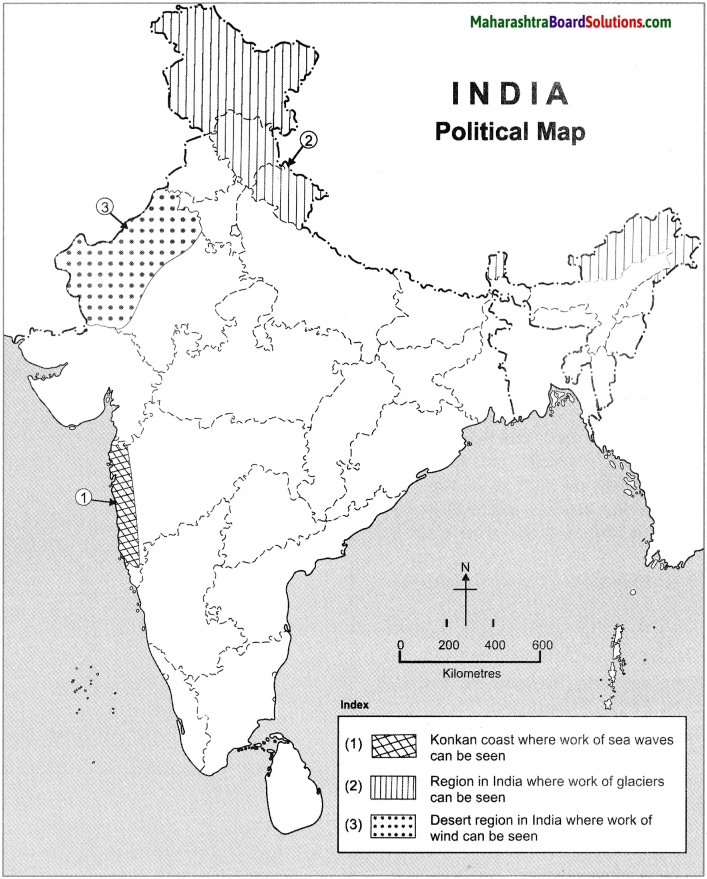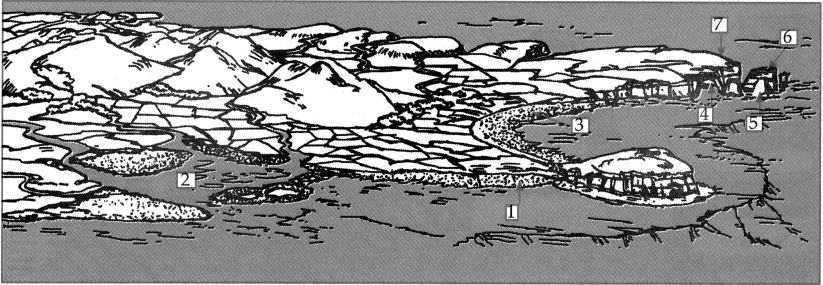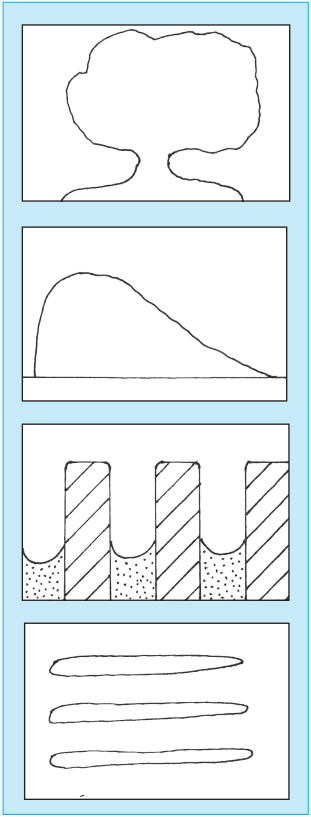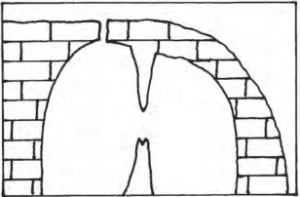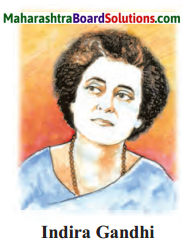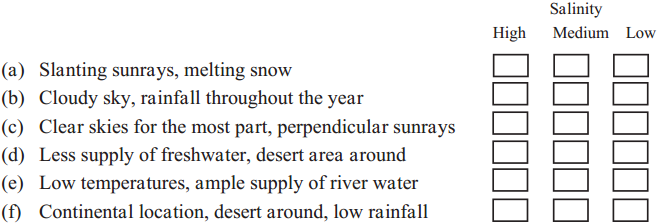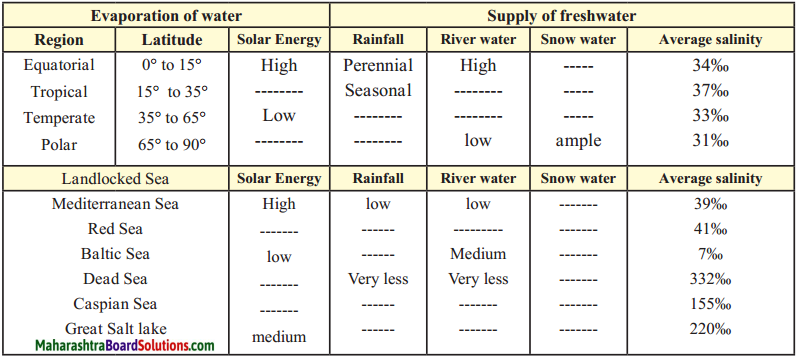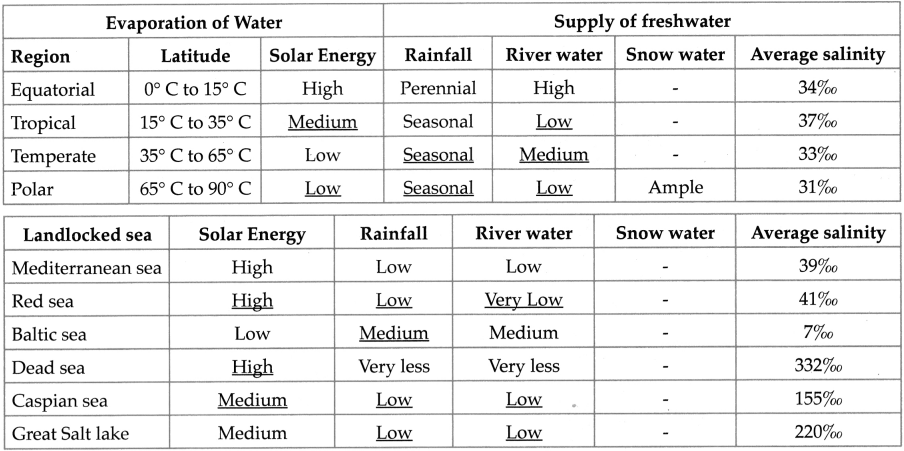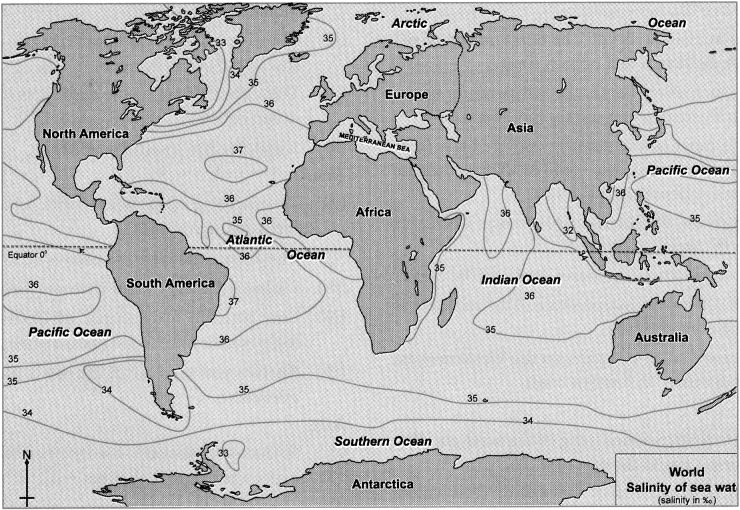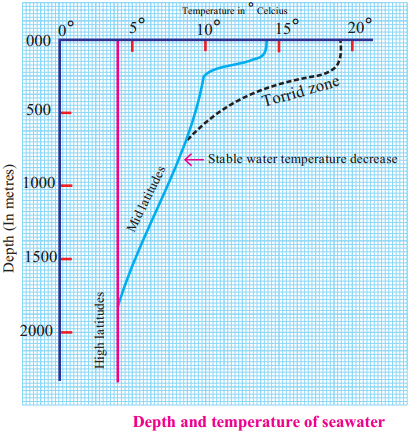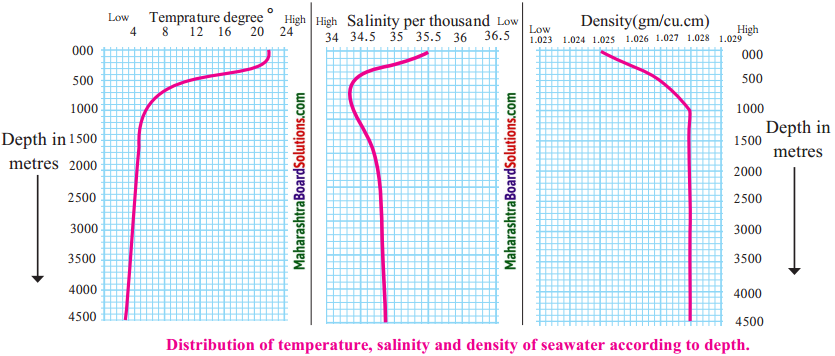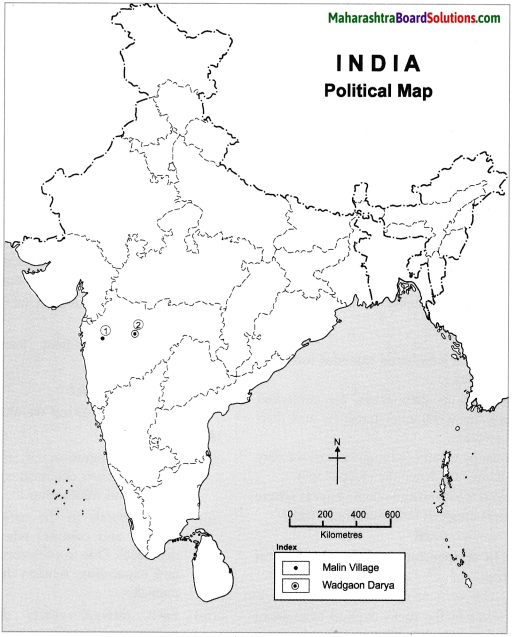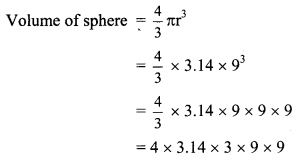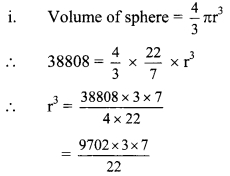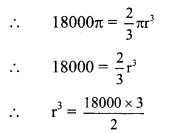Balbharti Maharashtra State Board Class 9 Marathi Solutions Aksharbharati Chapter 10 कुलूप Notes, Textbook Exercise Important Questions and Answers.
Maharashtra State Board Class 9 Marathi Aksharbharati Solutions Chapter 10 कुलूप
Marathi Aksharbharati Std 9 Digest Chapter 10 कुलूप Textbook Questions and Answers
1. आकृतिबंध पूर्ण करा.
प्रश्न (अ)
आकृतिबंध पूर्ण करा.

उत्तरः
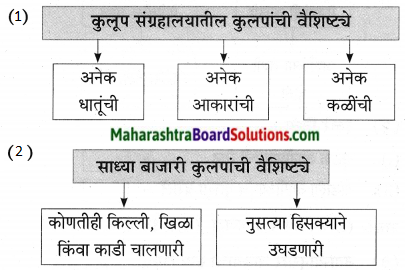

प्रश्न (आ)
कारणे शोधा.
1. काही कड्यांना आणि काही दारांना दोन दोन कुलुपे कारण
2. नानांनी शेजाऱ्यांकडे पसाभर धान्य मागितले नाही कारण
उत्तर:
1. कुलपांचा संग्रह मित्रमंडळीच्या नजरेस पडावा या नानांच्या हव्यासामुळे.
2. नानांचा स्वभाव मानी होता.
प्रश्न (इ)
खालील चौकटीत दिलेल्या संकल्पनाचा अर्थ स्पष्ट करा.

उत्तर:
| संकल्पना |
संकल्पनांचा अर्थ |
| 1. वसुधैव कुटुंबकम् वृत्ती |
‘सारे विश्व माझे घर’ अशी भावना. |
| 2. अक्षरशत्रू कुलूप |
अक्षरांचा वापर न करता नुसत्या चावीने उघडणारी कुलपे. |
| 3. चोर कलेला आश्रय देत नाही. |
कुलपांचे कौतुक न करता चोर चोरी करून जातात. |
| 4. माझ्या हौशीने मिळकतीचा बचाव केल |
दागिने घालण्याच्या आवडीने दागिने वाचवले. |
प्रश्न (ई)
आकृती पूर्ण करा.

उत्तर:
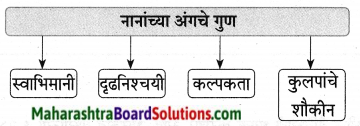
2. खालील शब्दांचे अर्थ शोधून लिहा.
प्रश्न 1.
खालील शब्दांचे अर्थ शोधून लिहा.
उत्तर:
- दुर्घट – अवघड
- हव्यास – लोभ
- कुचकामी – निरूपयोगी

3. पाठात आलेल्या विनोदी वाक्यांचा शोध घ्या व ती लिहा.
प्रश्न 1.
पाठात आलेल्या विनोदी वाक्यांचा शोध घ्या व ती लिहा.
उत्तर:
- दुध-दुभत्या कपाटापासून ते पैशाच्या तिजोरीपर्यंत प्रत्येक ठिकाणी कुलपे लावून नाकेबंदी करून टाकली आहे.
- कुलूप लोहाराकडून काढवावे तर पोटच्या पोरापेक्षाही ममतेने वाढवलेल्या कुलपाची हाडे खिळखिळी होताना पाहणे हे बंडूनानांसारख्यांना जरा दुर्घटच होते.
- पण तो दिवस ही सगळ्यांनी तितक्याच धार्मिकपणे उपासात काढला.
- नानांचे तर डोळे पांढरे होण्याची वेळ आली.
4. सहसंबंध शोधा.
प्रश्न 1.
सहसंबंध शोधा.
उत्तर:
- अंधार : उजेड : : नि:संशय : संशय
- सावध : बेसावध : : विश्वासू : अविश्वासू
- ते : सर्वनाम : : व : उभयान्वयी अव्यय
5. स्वमतः
प्रश्न 1.
बंडूनानांच्या कुलूपांच्या शौकामुळे घडणाऱ्या चमत्कारिक प्रसंगाविषयी तुमचे मत लिहा.
उत्तरः
उतारा क्र.1 मधील कृती 4: स्वमतचे उत्तर पाहा.
प्रश्न 2.
बंडूनानांच्या तोंडाला आपोआप कुलूप बसण्याची तुम्हांला समजलेली कारणे स्वभाषेत सांगा.
उत्तरः
उतारा क्र. 4 मधील कृती 4: स्वमतचे उत्तर पाहा.

6. अभिव्यक्ती:
प्रश्न 1.
बंडूनानांच्या छंदाच्या वर्णनातून पाठात घडणारा विनोद तुमच्या शब्दांत सांगा.
उत्तरः
उतारा क्र. 3 मधील कृती 4: स्वमतचे उत्तर पाहा.
प्रश्न 2.
व्यक्तिमत्त्व विकासात छंदाचे महत्त्व लिहा.
उत्तर:
स्पर्धेच्या युगात व्यक्तिमत्त्व विकासाला अनन्यसाधारण महत्त्व प्राप्त झाले आहे. दैनंदिन व्यवहारांमध्ये स्वत:ला इतरांच्या तुलनेत सरस ठेवण्यासाठी स्वत:मध्ये व्यक्तिमत्त्व विकास घडवून आणणे जरुरीचे आहे. प्रत्येकाला वेगवेगळा छंद असतो. कोणी वेगवेगळ्या विषयावर माहिती गोळा करतो, कोणी पुरातन वस्तूंचा संग्रह करतो. असे अनेक छंद असतात. वाचन करणे हाही एक छंद आहे.
म्हणजेच वाचन करणारी व्यक्ती ज्ञानी समजली जाते. कारण वाचनाने दररोज त्याच्या ज्ञानात भर पडत असते. नवनवीन गोष्टी ती आत्मसात करत असते. यामुळे तुमचा समजूतदारपणा अधिक फुलतो. आणखी लोक तुमच्याशी जोडले जातात. तसेच, नवीन छंद जोपासायचा प्रयत्न केला पाहिजे. तुम्हांला चांगल्या गोष्टीचा छंद असेल तर तुमचे व्यक्तिमत्त्व अधिक प्रभावी व खुलून दिसेल; म्हणून व्यक्तिमत्त्व विकासात छंदाचे महत्त्व आहे.
Marathi Akshar Bharati Class 9 Textbook Solutions Chapter 10 कुलूप Additional Important Questions and Answers
पुढील उताऱ्याच्या आधारे दिलेल्या सूचनेनुसार कृती करा:
कृती 1: आकलन कृती
प्रश्न 1.
आकृतिबंध पूर्ण करा.
उत्तर:
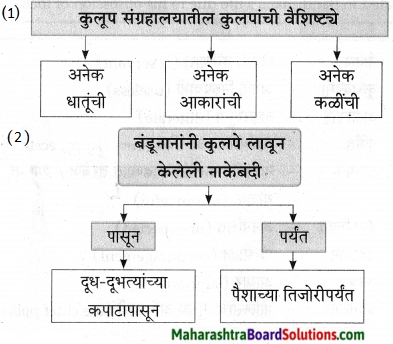
प्रश्न 2.
उत्तर लिहा.
उत्तर:

प्रश्न 3.
जोड्या जुळवा.
उत्तर:
| ‘अ’ गट |
‘ब’ गट |
| 1. पैशाची |
(अ) संग्रह |
| 2. कुलपांचा |
(ब) कोठी |
|
(क) तिजोरी |
उत्तर:
| ‘अ’ गट |
‘ब’ गट |
| 1. पैशाची |
(क) तिजोरी |
| 2. कुलपांचा |
(अ) संग्रह |

प्रश्न 4.
उताऱ्यानुसार वाक्यांचा क्रम लावा.
- बंडूनानांनी काही कड्यांस दोन-दोन व काही दारांस दोन्हीं बाजूंनी कुलपे लावलेली आहेत.
- कुलपांचा संग्रह मित्रमंडळींच्या नजरेस पडावा एवढीच आहे.
- कुलपे लावून नाकेबंदी करून टाकली आहे.
- आमच्या बंडूनानांना कुलपांचा मोठा शौक.
उत्तर:
- आमच्या बंडूनानांना कुलपांचा मोठा शौक.
- कुलपे लावून नाकेबंदी करून टाकली आहे.
- कुलपांचा संग्रह मित्रमंडळींच्या नजरेस पडावा एवढीच आहे.
- बंडूनानांनी काही कड्यांस दोन-दोन व काही दारांस दोन्हीं बाजूंनी कुलपे लावलेली आहेत.
खालील प्रश्नांची उत्तरे एका वाक्यात लिहा.
प्रश्न 1.
बंडूनानांना जडलेला छंद कोणता?
उत्तर:
बंडूनानांना कुलपांचा छंद जडला होता.
प्रश्न 2.
कुलपांचा संग्रह कोणाच्या नजरेस पडावा असे बंडूनानांना वाटत होते?
उत्तर:
कुलपांचा संग्रह मित्रमंडळींच्या नजरेस पडावा असे बंडूनानांना वाटत होते.
कंसातील योग्य शब्द वापरून रिकाम्या जागा भरा.
प्रश्न 1.
1. अनेक धातूंची, अनेक आकारांची, अनेक कळींची ………………………. जमवून त्यांनी एक संग्रहालय बनवले आहे. (कुलपे/किल्या/घरे/पुस्तके)
2. आमच्या …………….. कुलपांचा मोठा शौक. (सखूआजीला/बंडूनानांना/वडीलांना/खंडूनानांना)
उत्तर:
1. कुलपे
2. बंडूनानांना

शब्दसमूहासाठी एक शब्द चौकटीत लिहा
प्रश्न 1.
शब्दसमूहासाठी एक शब्द चौकटीत लिहा
उत्तर:

कृती 2: आकलन कृती
प्रश्न 1.
कारण लिहा.
बंडूनानांनी घरभर कुलपे लावून बंदोबस्त करण्याचे कारण; ………………….
(अ) घरावर डाका पडणार आहे, अशी बातमी त्यांना कळाली होती.
(ब) आपल्या चीजवस्तूंचे रक्षण व्हावे ही इच्छा होती.
(क) कुलपांचा संग्रह मित्रमंडळीच्या नजरेस पडावा म्हणून.
(ड) नानांना कुलूपांचा संग्रह करायचा होता.
उत्तर:
बंडूनानांनी घरभर कुलपे लावून बंदोबस्त करण्याचे कारण; कुलपांचा संग्रह मित्रमंडळींच्या नजरेस पडावा म्हणून.
प्रश्न 2.
आकृतिबंध पूर्ण करा.
उत्तर:
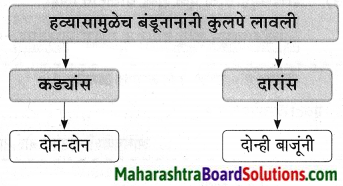
प्रश्न 3.
चूक की बरोबर लिहा.
1. बंडूनानांनी काही कड्यांस दोन-दोन व काही दारांस दोन्ही बाजूंनी कुलपे लावली आहेत.
2. आमच्या बंडूनानांना पुस्तकांचा मोठा शौक.
उत्तर:
1. बरोबर
2. चूक

कृती 3: व्याकरण कृती
प्रश्न 1.
खालील वाक्य लेखननियमांनुसार शुद्ध करून लिहा.
आपल्या चिजवस्तूंचे रक्षण व्हावे हि इच्छा होती.
उत्तरः
आपल्या चीजवस्तूंचे रक्षण व्हावे ही इच्छा होती.
प्रश्न 2.
अचूक शब्द लिहा.
1. मित्रमंडळि, मीत्रमंडळि, मित्रमंडळी, मीत्रमंडळी
2. संग्रहालय, सगृहालय, संगरहालय, संग्ररहालय
उत्तर:
1. मित्रमंडळी
2. संग्रहालय
प्रश्न 3.
खालील वाक्यांत अधोरेखित शब्दांऐवजी पाठात आलेले समान अर्थाचे शब्द शोधून वाक्ये पुन्हा लिहा.
1. पुस्तकांचा साठा करायला रमेशला आवडतो.
2. दारांस दोन्ही बाजूंनी टाळे लावलेली आहेत.
उत्तर:
1. पुस्तकांचा संग्रह करायला रमेशला आवडतो.
2. दारांस दोन्ही बाजूंनी कुलपे लावलेली आहेत.
प्रश्न 4.
खालील वाक्यातील अधोरेखित शब्दाचे वचन बदलून वाक्य पुन्हा लिहा.
आमच्या बंडूनानांना कुलपांचा मोठा शौक.
उत्तर:
आमच्या बंडूनानांना कुलपाचा मोठा शौक.

प्रश्न 5.
कंसातील सूचनेनुसार बदल करा.
(अधोरेखित शब्दांची जात ओळखा)
1. बंडूनानांना कुलपांचा मोठा शौक.
2. तो पहाटे दररोज चालायला जातो.
उत्तर:
1. नाम
2. क्रियाविशेषण अव्यय
प्रश्न 6.
तक्ता पूर्ण करा.
उत्तर:
| शब्द |
मूळ शब्द |
सामान्यरूप |
| कुलूपाचा |
कुलूप |
कुलपा |
| हव्यासामुळे |
हव्यास |
हव्यासा |
| कपाटापासून |
कपाट |
कपाटा |
| दारांस |
दारे |
दारां |
प्रश्न 7.
खालील वाक्यात अधोरेखित शब्दांऐवजी पाठात आलेला योग्य वाक्प्रचार शोधून वाक्य पुन्हा लिहा.
कुलपांचा संग्रह मित्रमंडळींच्या दृष्टीस पडावा एवढीच इच्छा आहे.
उत्तर:
कुलपांचा संग्रह मित्रमंडळींच्या नजरेस पडावा एवढीच इच्छा आहे.
प्रश्न 8.
कंसातील सूचनेनुसार बदल करा.
कुलपे जमवून बंडूनानांनी एक संग्रहालय बनवले आहे. (काळ ओळखा)
उत्तर:
वर्तमानकाळ

कृती 4: स्वमत
प्रश्न 1.
बंडूनानांच्या कुलपांच्या शौकामुळे घडणाऱ्या चमत्कारिक प्रसंगांविषयी तुमचे मत लिहा.
उत्तरः
बंडूनानांना कुलपांचा शौक होता. आपल्या या शौकापायी त्यांनी वेगवेगळ्या प्रकारची कुलपे संग्रहित करून ठेवलेली होती. त्यांच्या कुटुंबाने (बायकोने) धान्याच्या कोठीच्या कुलपांची किल्ली हरवली. कुलूप लोहाराकडून काढून घेतले तर ते तुटेल म्हणून त्यांनी लोहाराला बोलाविले नाही. ते इतके स्वाभिमानी होते की, इतरांकडून धान्य उसने न घेता घरातील सर्व मंडळींसह दोन दिवस उपाशीच राहिले. कडक उपासाने नानांची तब्येत बिघडली, तेव्हा इतर लोकांनी लोहाराला बोलाविले. त्यांच्याशी नाना व्यवस्थित बोलत नव्हते. खरे पाहता नानांना विविध प्रकारची कुलपे संग्रही ठेवण्याचा शौक होता. त्यांना आपल्या शौकापुढे कोणतीच गोष्ट महत्त्वाची वाटत नसे. आपल्या शौकापायी व्यक्ती काहीही करण्यास तयार होते. नानांच्या बाबतीतही हेच म्हटले पाहिजे.
पुढील उताऱ्याच्या आधारे दिलेल्या सूचनेनुसार कृती करा:
कृती 1: आकलन कृती
प्रश्न 1.
आकृतिबंध पूर्ण करा.
उत्तरः
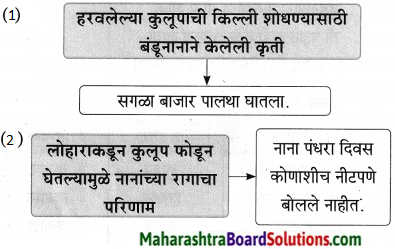
प्रश्न 2.
उत्तर लिहा
उत्तरः

प्रश्न 3.
जोड्या जुळवा.
| ‘अ’ गट |
‘ब’ गट |
| 1. धान्याची |
(अ) किल्ली |
| 2. कुलूपाची |
(ब) संग्रह |
|
(क) कोठी |
उत्तरः
| ‘अ’ गट |
‘ब’ गट |
| 1. धान्याची |
(क) कोठी |
| 2. कुलूपाची |
(अ) किल्ली |

प्रश्न 4.
उताऱ्यानुसार वाक्यांचा क्रम लावा.
- नाना पंधरा दिवसांपर्यंत आमच्याशी नीटपणे बोलेनातच!
- दुसऱ्या दिवशी द्वादशी.
- किल्ली शोधण्याकरता त्यांनी सगळा बाजार पालथा घातला.
- बंडूनानांवर अनेक चमत्कारिक प्रसंगही आले आहेत.
उत्तर:
- बंडूनानांवर अनेक चमत्कारिक प्रसंगही आले आहेत.
- किल्ली शोधण्याकरता त्यांनी सगळा बाजार पालथा घातला.
- दुसऱ्या दिवशी द्वादशी.
- नाना पंधरा दिवसापर्यंत आमच्याशी नीटपणे बोलेनातच!
खालील प्रश्नांची उत्तरे एका वाक्यात लिहा.
प्रश्न 1.
धान्याच्या कोठीच्या कुलपाची किल्ली कोणी हरवली?
उत्तरः
धान्याच्या कोठीच्या कुलपाची किल्ली बंडूनानांच्या कुटुंबाने हरवली.
प्रश्न 2.
धान्याच्या कोठीच्या कुलपाची किल्ली हरवल्यामुळे घरातील सर्व मंडळींना किती दिवस उपवास घडला?
उत्तरः
धान्याच्या कोठीच्या कुलपाची किल्ली हरवल्यामुळे घरातील सर्व मंडळींना दोन दिवस उपवास घडला.
प्रश्न 3.
कंसातील योग्य शब्द वापरून रिकाम्या जागा भरा.
1. नानांचे तर डोळे ………… होण्याची वेळ आली. (काळे, लाल, पांढरे, निळे)
2. बंडूनानांवर अनेक …………. प्रसंगही आले आहेत. (चमत्कारिक, रोमांचकारी, दिलचस्प, भयानक)
उत्तर:
1. पांढरे
2. चमत्कारिक

प्रश्न 4.
शब्दसमूहासाठी एक शब्द चौकटीत लिहा.
उत्तर:

कृती 2: आकलन कृती
प्रश्न 1.
कारणे लिहा.
1. नानांनी शेजाऱ्यांपाशी पसाभर धान्य मागितले नाही; कारण …………….
…………………………………………………………………….
2. कुलूप लोहाराकडून काढायचे नाही; कारण …………………………………
…………………………………………………………………….
उत्तर:
1. नानांनी शेजाऱ्यांपाशी पसाभर धान्य मागितले नाही; कारण नानांचा स्वभाव मानी होता.
2. कुलूप लोहाराकडून काढायचे नाही; कारण कुलपाची हाडे खिळखिळी होताना पाहणे हे बंडूनानांसाठी अवघड होते.
प्रश्न 2.
आकृतिबंध पूर्ण करा.
उत्तर:
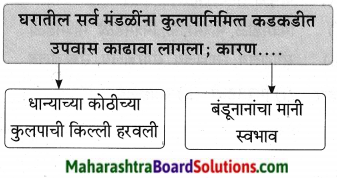
प्रश्न 3.
आकृतिबंध पूर्ण करा.
उत्तर:
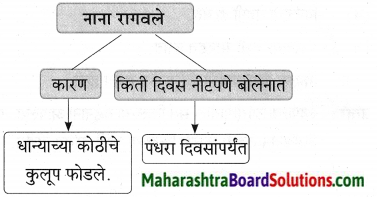
प्रश्न 4.
चूक की बरोबर ते लिहा.
बंडूनाना शेजाऱ्यांपाशी धान्य उसने मागत असत.
उत्तरः
चूक
कृती 3: व्याकरण कृती
प्रश्न 1.
खालील वाक्य लेखननियमांनुसार शुद्ध करून लिहा.
एवढा खटाटोप करून ठेवल्यामूळे बंडूनानांवर अनेक चमत्कारिक परसंग आले आहेत.
उत्तर:
एवढा खटाटोप करून ठेवल्यामुळे बंडूनानांवर अनेक चमत्कारिक प्रसंग आले आहेत.

प्रश्न 2.
अचूक शब्द लिहा.
1. खिळखीळी, खिळखिळी, खीळखीळी, खिळखिळि
2. दूर्घट, दुरघट, दुर्गट, दुर्घट
उत्तर:
1. खिळखिळी
2. दुर्घट
प्रश्न 3.
समानार्थी शब्द लिहा.
1. राग – [ ]
2. नयन – [ ]
उत्तर:
1. घुस्सा
2. डोळे
प्रश्न 4.
खालील वाक्यातील अधोरेखित शब्दाचे वचन बदलून वाक्य पुन्हा लिहा.
धान्याच्या कोठीच्या कुलपाची किल्ली त्यांच्या कुटुंबाने हरवली.
उत्तरः
धान्याच्या कोठीच्या कुलपांच्या किल्ल्या त्यांच्या कुटुंबाने हरवल्या.
प्रश्न 5.
कंसातील सूचनेनुसार बदल करा.
1. नानांचे तर डोळे पांढरे होण्याची वेळ आली. (अधोरेखित शब्दाची जात ओळखा)
2. घरासमोर विहीर आहे. (अधोरेखित शब्दाची जात ओळखा)
उत्तर:
1. विशेषण
2. शब्दयोगी अव्यय

प्रश्न 6.
तक्ता पूर्ण करा.
उत्तर:
| शब्द |
प्रत्यस |
विभक्ती |
| कुलपाची |
ची |
षष्टी (एक वचन) |
| लोहारास |
स |
द्वितीया(एक वचन) |
प्रश्न 7.
तक्ता पूर्ण करा.
उत्तर:
| शब्द |
मूळ शब्द |
सामान्यरूप |
| लोहाराकडून |
लोहार |
लोहारा |
| शेजाऱ्यांपाशी |
शेजारी |
शेजाऱ्या |
प्रश्न 8.
वाक्प्रचाराचा अर्थ लिहा.
1. हाडे खिळखिळी होणे
2. नजरेस पडणे
उत्तर:
1. हाडे खिळखिळी होणे : खूप मार लागणे
2. नजरेस पडणे : दृष्टीस पडणे
प्रश्न 9.
कंसातील सूचनेनुसार बदल करा.
बंडूनानांनी किल्ली शोधण्याकरता सगळा बाजार पालथा घातला होता. (काळ ओळखा)
उत्तर:
भूतकाळ

प्रश्न 10.
पर्यायी शब्द लिहा.
उत्तर:
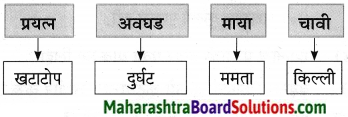
कृती 4: स्वमत
प्रश्न 1.
बंडूनानांसारखा तुम्हांलाही जरूर कोणता ना कोणता तरी छंद असणारच. तुम्ही आपल्या छंदाची जोपासना कशी करता हे थोडक्यात व्यक्त करा.
उत्तरः
बंडूनानांप्रमाणे मलाही छंद आहे, तो म्हणजे नाणी गोळा करण्याचा. आतापर्यंत मी देश-विदेशांतील अनेक नाणी संग्रही बाळगली आहेत, नाणी हरवू नयेत तसेच ती चोरीला जाऊ नयेत; म्हणून मी नाणी ठेवण्यासाठी एक स्वतंत्र कपाटच केलेले आहे. प्रत्येक महिन्याच्या शेवटच्या रविवारी मी माझी सर्व नाणी बाहेर काढून त्यांना स्वच्छ कपड्याने पुसून ठेवतो. माझ्या मित्रांना घरी बोलावून त्यांना सर्व नाणी दाखवतो, पण कोणालाही हात लावू देत नाही. मुंबईतील चोरबाजार, फॅशन स्ट्रीट येथे वेळोवेळी जाऊन विविध देशांची नाणी मी खरेदी करतो. संगणकाच्या मदतीने परदेशात नवीन निघालेल्या नाण्यांची चित्रे पाहतो व अथक प्रयत्न करून, ती नाणी मिळविण्याचा प्रयत्न करतो.
पुढील उताऱ्याच्या आधारे दिलेल्या सूचनेनुसार कृती कराः
कृती 1: आकलन कृती
प्रश्न 1.
आकृतिबंध पूर्ण करा.
उत्तरः
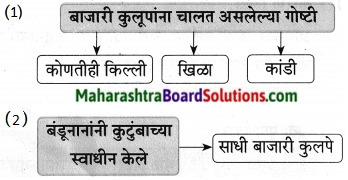
प्रश्न 2.
उत्तरे लिहा.
1. कुलपे पुष्कळ बरी – [ ]
2. बंडूनानांची वृत्ती – [ ]
उत्तर:
1. अक्षरशत्रू
2. ‘वसुधैव कुटूंबकम्’

प्रश्न 3.
उताऱ्यानुसार वाक्यांचा क्रम लावा.
- ‘वसुधैव कुटुंबकम्’ वृत्तीचे नाना.
- नानांनी घरच्यांच्या स्वाधीन बाजारी कुलपे केली.
- अक्षरशत्रू कुलपे पुष्कळ बरी.
- अक्षरे जुळवताना ती जवळ उभे राहाणारासही दिसू लागली.
उत्तर:
- नानांनी घरच्यांच्या स्वाधीन बाजारी कुलपे केली.
- ‘वसुधैव कुटुंबकम्’ वृत्तीचे नाना.
- अक्षरे जुळवताना ती जवळ उभे राहाणारासही दिसू लागली.
- अक्षरशत्रू कुलपे पुष्कळ बरी.
खालील प्रश्नांची उत्तरे एका वाक्यात लिहा.
प्रश्न 1.
बंडूनाना कोणती कुलपे कुटुंबाच्या स्वाधीन करू लागले?
उत्तरः
बंडूनाना साधी बाजारी कुलपे कुटुंबाच्या स्वाधीन करू लागले.
प्रश्न 2.
‘वसुधैव कुटुंबकम्’ वृत्ती पाहून कोणाला चोरी करण्याची इच्छा झाली?
उत्तरः
‘वसुधैव कुटुंबकम्’ वृत्ती पाहून नानांच्या एका विश्वासू नोकराला चोरी करण्याची इच्छा झाली.
कंसातील योग्य शब्द वापरून रिकाम्या जागा भरा.
प्रश्न 1.
1. ………….. वृत्ती पाहून नानांच्या पदरच्या एका विश्वासू नोकरालाही चोरी करण्याची इच्छा झाली. (‘वसुधैव कुटुंबकम्’/प्रामाणिक/एकनिष्ट/साधीभोळी)
2. अक्षरशत्रू ……….. पुष्कळ बरी. (दरवाजे/कुलपे/घरे/किल्ली)
उत्तर:
1. ‘वसुधैव कुटुंबकम्’
2. कुलपे
कृती 2: आकलन कृती
कारण लिहा.
प्रश्न 1.
आपल्या उपयोगातील सर्व किल्ल्या बंडूनाना आपल्या जानव्यात अडकवून ठेवत; कारण ……………..
(अ) किल्ल्या कधी हरवत नाहीत.
(ब) किल्ल्या नेहमी हरवत.
(क) किल्ल्या कधी सापडत नसत.
(ड) किल्या विसरण्याची बंडूनानांना सवय होती.
उत्तरः
आपल्या उपयोगातील सर्व किल्ल्या बंडूनाना आपल्या जानव्यात अडकवून ठेवत; कारण किल्ल्या कधी हरवत नाहीत.

प्रश्न 2.
आकृतिबंध पूर्ण करा.
उत्तरः
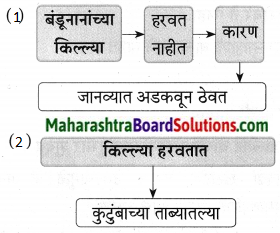
प्रश्न 3.
चूक की बरोबर ते लिहा.
1. यापेक्षा अक्षरशत्रू कुलपे पुष्कळ वाईट.
2. कुलूप नुसते दाबले की लागत असे.
उत्तर:
1. चूक
2. बरोबर
कृती 3: व्याकरण कृती
प्रश्न 1.
खालील वाक्ये लेखननियमांनुसार शुद्ध करून लिहा.
1. कुलूप नूसते दाबले कि लागत असे.
2. प्रथम त्यांनि अक्षरि कुलूप लावले.
उत्तर:
1. कुलूप नुसते दाबले की लागत असे.
2. प्रथम त्यांनी अक्षरी कुलूप लावले.
प्रश्न 2.
अचूक शब्द लिहा.
1. कुटुंब, कुटुंब, कूटुंब, कुटूंब.
2. वसुधैव, वसूधैव, वसूधयव, वसुधयैव
उत्तर:
1. कुटुंब
2. वसुधैव

प्रश्न 3.
खालील वाक्यात अधोरेखित शब्दाऐवजी पाठात आलेला समान अर्थाचा शब्द शोधून वाक्य पुन्हा लिहा.
अक्षरशत्रू कुलपे भरपूर बरी.
उत्तर:
अक्षरशत्रू कुलपे पुष्कळ बरी.
प्रश्न 4.
विरुद्धार्थी शब्द लिहा.
- अविश्वास × [ ]
- काळोख × [ ]
- सापडतात × [ ]
- प्राचीन × [ ]
उत्तर:
- विश्वास
- उजेड
- हरवतात
- आधुनिक
प्रश्न 5.
अधोरेखित शब्दांची जात ओळखा.
1. बंडूनानांचा नोकर हजारपाचशे डबोले घेऊन पळून गेला.
2. छे! मी तसे म्हणालोच नाही.
उत्तर:
1. क्रियापद
2. केवलप्रयोगी अव्यय
प्रश्न 6.
तक्ता पूर्ण करा.
उत्तर:
| शब्द |
प्रत्यय |
विभक्ती |
| नोकराला |
ला |
द्वितीया (एकवचन) |
| कुलपाची |
ची |
षष्ठी (एकवचन) |

प्रश्न 7.
तक्ता पूर्ण करा.
उत्तर:
| शब्द |
मूळ शब्द |
सामान्यरूप |
| अंधारात |
अंधार |
अंधारा |
| कुटुंबाच्या |
कुटुंब |
कुटुंबा |
प्रश्न 8.
खालील वाक्यात अधोरेखित शब्दाऐवजी पाठात आलेला योग्य वाक्प्रचार शोधून वाक्य पुन्हा लिहा.
रमेशने सुरेशचे पुस्तक त्याच्या हवाली केले.
उत्तर:
रमेशने सुरेशचे पुस्तक त्याच्या स्वाधीन केले.
प्रश्न 9.
कंसातील सूचनेनुसार बदल करा.
बंडूनानांना फार दिवस प्रश्न पडला होता. (काळ ओळखा)
उत्तर:
भूतकाळ
प्रश्न 10.
पर्यायी शब्द लिहा.
उत्तर:
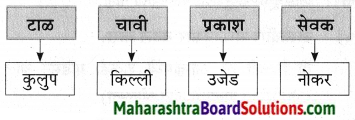
कृती 4: स्वमत
प्रश्न 1.
बंडूनानांच्या छंदाच्या वर्णनातून पाठात घडणारा विनोद तुमच्या शब्दांत सांगा.
उत्तरः
एकदा बंडूनानांच्या घरात तिजोरीची चोरी झाली. त्यानंतर त्यांनी तिजोरीस घंटेचे कुलूप लावले आणि तिजोरी स्वत:च्या झोपायच्या खोलीत नेऊन ठेवली. आता आपण चोराला पकडू शकतो कारण किल्लीचा प्रयोग सुरू होताच घंटा वाजायला लागणार व तो पकडला जाणार म्हणून नाना खूप आनंदी होते. ज्या दिवशी ते कुलूप लावले गेले, त्याच रात्री घरातील मंडळींना घंटेचा आवाज ऐकायला आला. सर्वजण बंडूनानांच्या खोलीत गेले. बंडूनाना स्वतः उजव्या हाताने कुलूप उघडत होते व डाव्या हाताने उजव्या हाताला पकडून जोर जोरात ‘चोर, चोर’ असे म्हणून ओरडत होते. घरातील मंडळींना वाटले होते की, खरोखरचा चोर घरात शिरला आहे; पण प्रत्यक्षात बंडूनानाच स्वत:च चोराची भूमिका निभावून स्वत:च कोतवालाची भूमिका सुद्धा पार पाडत होते.

पुढील उताऱ्याच्या आधारे दिलेल्या सूचनेनुसार कृती करा:
कृती 1: आकलन कृती
प्रश्न 1.
आकृतिबंध पूर्ण करा.
उत्तरः
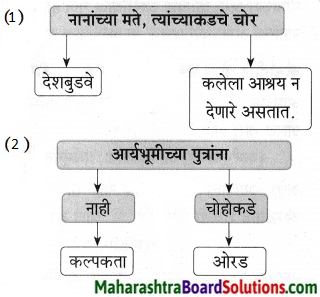
प्रश्न 2.
उत्तर लिहा.
देशबुडवे व कलेला आश्रय न देणारे – [ ]
उत्तर:
चोर
प्रश्न 3.
जोड्या जुळवा.
| ‘अ’ गट |
‘ब’ गट |
| 1. चोर |
(अ) पुत्र |
| 2. कलेला |
(ब) देशबुडवे |
| 3. आर्यभूमीचे |
(क) आश्रय |
| 4. अलौकिक गुण |
(ड) अकल्पित |
|
(इ) दृढनिश्चय |
उत्तर:
| ‘अ’ गट |
‘ब’ गट |
| 1. चोर |
(ब) देशबुडवे |
| 2. कलेला |
(क) आश्रय |
| 3. आर्यभूमीचे |
(अ) पुत्र |
| 4. अलौकिक गुण |
(इ) दृढनिश्चय |

प्रश्न 4.
उताऱ्यानुसार वाक्यांचा क्रम लावा.
- नानांच्या अंगी दृढनिश्चय हा एक अलौकिक गुण आहे.
- चोरसुद्धा देशबुडवे व कलेला आश्रय न देणारे असतात!
- बंडूनाना आता तिजोरीला कुलूप लावून पूर्वीचे काढून टाकणार.
- आर्यभूमीच्या पुत्रांना कल्पकता नाही म्हणून चोहोकडे ओरड चालू आहे.
उत्तर:
- आर्यभूमीच्या पुत्रांना कल्पकता नाही म्हणून चोहोकडे ओरड चालू आहे.
- बंडूनाना आता तिजोरीला कुलूप लावून पूर्वीचे काढून टाकणार.
- नानांच्या अंगी ‘दृढनिश्चय’ हा एक अलौकिक गुण आहे.
- चोरसुद्धा देशबुडवे व कलेला आश्रय न देणारे असतात!
खालील प्रश्नांची उत्तरे एका वाक्यात लिहा.
प्रश्न 1.
बंडूनानांच्या मते संधी मिळाली असती तर कोण झाले असते?
उत्तर:
बंडूनानांच्या मते संधी मिळाली असती तर ‘एडिसन’ झाले असते.
प्रश्न 2.
नानांच्या अंगी कोणता अलौकिक गण होता?
उत्तर:
नानांच्या अंगी ‘दृढनिश्चय’ हा अलौकिक गुण होता.
कंसातील योग्य शब्द वापरून रिकाम्या जागा भरा.
प्रश्न 1.
- आमच्या ……….. पुत्रांना कल्पकता नाही म्हणून चोहोकडे ओरड चालू आहे. (कर्मभूमीच्या, आर्यभूमीच्या, धर्मभूमीच्या, मातृभूमीच्या)
- आहो, आम्हाला संधी मिळत नाही साधी! ती मिळाली तर आम्हांकडे शेकडो …………………………….. झाले असते. (एडिसन, पुजारी, शेतकरी, वकील)
- नानांच्या अंगी ……………………… हा एक अलौकिक गुण आहे. (आत्मविश्वास, निश्चय, स्वावलंबन, दृढनिश्चय)
उत्तर:
- आर्यभूमीच्या
- एडिसन
- दृढनिश्चय

कृती 2: आकलन कृती
प्रश्न 1.
कारण लिहा.
नानांचा तिळपापड झाला! कारण ……………………..
(अ) अनुमानाप्रमाणे कपाटाची चोरी झाली.
(ब) अनुमानाप्रमाणे तिजोरीची चोरी झाली.
(क) अनुमानाप्रमाणे घराची चोरी झाली
(ड) अनुमानाप्रमाणे दुकानाची चोरी झाली.
उत्तर:
नानांचा तिळपापड झाला! कारण अनुमानाप्रमाणे तिजोरीची चोरी झाली.
प्रश्न 2.
फरक लिहा.
उत्तर:
| पूर्वीचे कुलूप |
आताचे नवीन कुलूप |
| 1. कुलूप नुसते दाबून लावता येते. |
(अ) नुसत्या हिसड्याने उघडते. |
| 2. कुलपास उघडायला किल्ली पाहिजे. |
(ब) कुलूप लावताना किल्ली पाहिजे. |
प्रश्न 3.
चूक की बरोबर लिहा.
1. हे कुलूप मी आता तिजोरीला लावून पूर्वीचे काढून टाकणार.
2. लोहाराच्या मदतीने बंडूनानांनी स्वत: तयार केलेले एक कुलूप दाखवले.
उत्तरः
1. बरोबर
2. बरोबर

कृती 3: व्याकरण कृती
प्रश्न 1.
खालील वाक्ये लेखननियमांनुसार शुद्ध करून लिहा. ‘या कुलपाची कलपना मला आमच्या तिजोरिच्या कुलपावरून सुचली.’
उत्तर:
‘या कुलपाची कल्पना मला आमच्या तिजोरीच्या कुलपावरून सुचली.’
प्रश्न 2.
अचूक शब्द लिहा.
1. एडीसन, एडिसन, ऐडिसन, एडिअस
2. दृढनिश्चय, द्रढनिश्चय, दृढनीश्चय, द्रढनीश्चय
उत्तर:
1. एडिसन
2. दृढनिश्चय
प्रश्न 3.
समानार्थी शब्द लिहा.
1. जमीन – [ ]
2. मौका – [ ]
उत्तर:
1. भूमी
2. संधी
प्रश्न 4.
खालील वाक्यातील अधोरेखित शब्दाचे वचन बदलून वाक्य पुन्हा लिहा.
आर्यभूमीच्या पुत्रांना कल्पकता नाही.
उत्तरः
आर्यभूमीच्या पुत्राला कल्पकता नाही.

प्रश्न 5.
कंसातील सूचनेनुसार बदल करा.
ती मिळती तर आम्हांमध्ये शेकडो एडिसन झाले असते. (अधोरेखित शब्दाची जात ओळखा)
उत्तरः
सर्वनाम
प्रश्न 6.
खालील वाक्यात अधोरेखित शब्दाचा विरुद्धार्थी शब्द लिहून वाक्य पुन्हा लिहा.
पण हा आरोप निव्वळ खरा नाही.
उत्तरः
पण हा आरोप निव्वळ खोटा नाही.
प्रश्न 7.
तक्ता पूर्ण करा.
उत्तरः
| शब्द |
मूळ शब्द |
सामान्यरूप |
| पुत्रांना |
पुत्र |
पुत्रां |
| लोहाराच्या |
लोहार |
लोहारा |
| लोकांत |
लोक |
लोकां |
| अनुमानाप्रमाणे |
अनुमान |
अनुमाना |
प्रश्न 8.
खालील वाक्यात अधोरेखित शब्दाऐवजी पाठात आलेला योग्य वाक्प्रचार शोधून वाक्य पुन्हा लिहा.
भूषण एस.एस.सी परीक्षेत चांगल्या गुणांनी पास झाल्यामुळे त्याच्या मित्रांनी त्याची प्रशंसा केली.
उत्तरः
भूषण एस.एस.सी परीक्षेत चांगल्या गुणांनी पास झाल्यामुळे त्याच्या मित्रांनी त्याची स्तुती केली.
प्रश्न 9.
कंसातील सूचनेनुसार बदल करा.
बंडूनानांनी ठरलेला बेत लागलीच अमलात आणला होता. (काळ ओळखा)
उत्तर:
भूतकाळ

प्रश्न 10.
पर्यायी शब्द लिहा.
उत्तर:
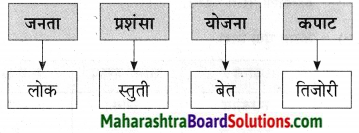
कृती 4: स्वमत
प्रश्न 1.
बंडूनानांच्या तोंडाला आपोआप कुलूप बसण्याची तुम्हांला समजलेली कारणे स्वभाषेत सांगा.
उत्तरः
बंडूनानांनी घरातील तिजोरीला कुलूप लावूनसुद्धा त्यांच्या एका नोकराने चोरी केली तर एकदा चोरांनी त्यांचा ऐवज पळवला. शेवटी कंटाळून त्यांनी गावात आलेल्या टोळीकडून अनेक कुलपे विकत घेतली. त्याच दिवशी नाना आपल्या घरातील मंडळींसह नाटकाला गेले. नाटकाला जाताना ते फुशारक्या मारत होते की, चोरांच्या बापजन्मीसुद्धा त्यांची तिजोरी फोडली जाणार नाही. कारण त्यांच्याजवळ आता विशिष्ट प्रकारची कुलपे आहेत. नाटक संपल्यावर घरी आल्यावर त्यांच्या सर्व पेट्यांची कुलपे जशीच्या तशीच होती व आतील माल मात्र चोरीला गेलेला होता. टोळी पळून गेली होती. त्यांच्या कुटुंबाच्या हौशीमुळे त्यांच्या अंगावरील दागिने मात्र वाचले होते. त्यामुळे त्यांचे कुटुंब नेहमी त्यांना टोमणा मारत असे.
पुढील उताऱ्याच्या आधारे दिलेल्या सूचनेनुसार कृती करा:
कृती 1: आकलन कृती
प्रश्न 1.
आकृतिबंध पूर्ण करा.
उत्तरः

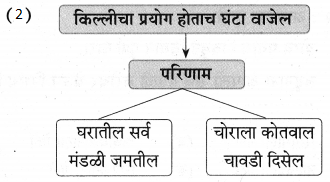
प्रश्न 2.
उत्तरे लिहा.
1. नानांनी आपल्या निजायच्या खोलीत नेऊन ठेवली – [ ]
2. नाटकाचा पहिला प्रयोग – [ ]
उत्तर:
1. तिजोरी
2. ‘सुभद्राहरण अथवा चौर्यविपाक’

प्रश्न 3.
उताऱ्यानुसार वाक्यांचा क्रम लावा.
- तो काय चमत्कार सांगावा.
- ‘घंटेच्या आवाजाबरोबर मी ताडकन उठून त्याच्या मानगुटीस बसलोच समजा!’
- आता मात्र चोर माझ्या हाती नि:संशय सापडणार.
- नानांनी तिजोरीस घंटचे कुलूप लावले.
उत्तर:
- नानांनी तिजोरीस घंटचे कुलूप लावले.
- आता मात्र चोर माझ्या हाती नि:संशय सापडणार
- ‘घंटेच्या आवाजाबरोबर मी ताडकन उठून त्याच्या मानगुटीस बसलोच समजा!’
- तो काय चमत्कार सांगावा.
खालील प्रश्नांची उत्तरे एका वाक्यात लिहा.
प्रश्न 1.
तिजोरीला कुलूप लावून नाना तिजोरी कोठे घेऊन गेले?
उत्तर:
तिजोरीला कुलूप लावून नाना तिजोरी निजायच्या खोलीत घेऊन गेले.
प्रश्न 2.
नाटकाच्या पहिल्या प्रयोगाचे नाव काय होते?
उत्तरः
नाटकाच्या पहिल्या प्रयोगाचे नाव ‘सुभद्राहरण अथवा चौर्यविपाक’ होते.
कंसातील योग्य शब्द वापरून रिकाम्या जागा भरा.
प्रश्न 1.
1. नानांनी तिजोरीस …………. कुलूप लावले. (घंटेचे, टाळ्याचे, अक्षरांचे, अंकांचे)
2. नाटकाचा पहिला प्रयोग …………. अथवा चौर्यविपाक’ त्याच दिवशी होता. (मंतरलेले लिंबू, सुभद्राहरण, गिधाड, कुलांगार)
उत्तर:
1. घंटेचे
2. सुभद्राहरण

कृती 2: आकलन कृती
प्रश्न 1.
योग्य पर्याय निवडून विधान पूर्ण करा.
बंडूनाना आपली सर्व मंडळी बरोबर घेऊन निर्भय चित्ताने ………………
(अ) सिनेमाला गेले
(ब) कथाकथनाला गेले
(क) नाटकाला गेले
(ड) चित्रपटाला गेले
उत्तरः
बंडूनाना आपली सर्व मंडळी बरोबर घेऊन निर्भय चित्ताने नाटकाला गेले.
प्रश्न 2.
कोण ते लिहा.
उत्तरः
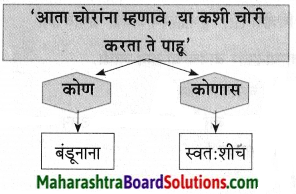
प्रश्न 3.
चूक की बरोबर ते लिहा.
1. बलुची लोकांजवळची कुलपे लेखकाने विकत घेतली.
2. कर्मधर्मसंयोगाने एक नाटकमंडळी गावात आली होती.
उत्तर:
1. चूक
2. बरोबर
कृती 3: व्याकरण कृती
प्रश्न 1.
खालील वाक्य लेखननियमांनुसार शुद्ध करून लिहा.
पहिला प्रयोग ‘सूभद्राहरण अथवा चौर्यवीपाक’ त्याच दिवशी होता.
उत्तरः
पहिला प्रयोग ‘सुभद्राहरण अथवा चौर्यविपाक’ त्याच दिवशी होता.

प्रश्न 2.
अचूक शब्द लिहा.
1. निरभय, नीरभय, निर्भय, निर्रभय
2. तरेतरेची, त-हेत-हेची, त-हेतरेची, तरेत-हेची
उत्तर:
1. निर्भय
2. त-हेत-हेची
प्रश्न 3.
खालील वाक्यांत अधोरेखित शब्दांऐवजी पाठात आलेले समान अर्थाचे शब्द शोधून वाक्य पून्हा लिहा.
1. आता मात्र भामटा माझ्या हाती नि:संशय सापडणार.
2. बंडूनानांनी तिजोरीला कुलूप लावण्याची योजना आखली.
उत्तर:
1. आता मात्र चोर माझ्या हाती नि:संशय सापडणार.
2. बंडूनानांनी तिजोरीला कुलूप लावण्याचा बेत आखला.
प्रश्न 4.
खालील वाक्यातील अधोरेखित शब्दाचे वचन बदलून वाक्ये पुन्हा लिहा.
‘आता चोरांना म्हणावे, या, कशी चोरी करता ते पाहू.’
उत्तर:
‘आता चोराला म्हणावे, ये, कशी चोरी करतोस ते पाहू.’
प्रश्न 5.
कंसातील सूचनेनुसार बदल करा.
- पारध्याने जाळे टाकले; पण त्यात सावज अडकलेच नाही. (अधोरेखित शब्दाची जात ओळखा)
- सर्वजण पोटभर जेवत असत. (काळ ओळखा)
- हा अविचार आम्हाला पसंत पडला. (अधोरेखित शब्दाचा विरुद्धार्थी शब्द लिहून वाक्य पुन्हा लिहा.)
उत्तर:
- उभयान्वयी अव्यय
- भूतकाळ
- हा विचार आम्हाला पसंत पडला.
प्रश्न 6.
तक्ता पूर्ण करा.
उत्तर:
| शब्द |
सामान्यरूप |
मूळ शब्द |
| लोकांत |
लोकां |
लोक |
| बेट्याला |
बेट्या |
बेटा |

प्रश्न 7.
काळ बदला.
चोर ! चोर ! म्हणून ओरडत आहेत. (भूतकाळ करा)
उत्तर:
चोर! चोर ! म्हणून ओरडत होते.
प्रश्न 8.
पर्यायी शब्द लिहा.
उत्तर:
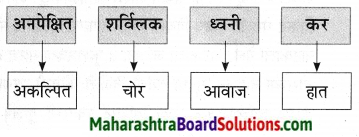
कृती 4: स्वमत
प्रश्न 1.
घंटेचे कुलूप लावल्यावर चोर आपल्या हाती नि:संशय सापडणार, अशी नानांना वाटत असलेली खात्री बरोबर होती का? यावर तुमचे मत लिहा.
उत्तरः
नानांच्या घरातील तिजोरीची अनुमानाप्रमाणे चोरी झाली, तेव्हा नानांचा तिळपापड झाला. त्यानंतर नानांची लगेचच तिजोरीस घंटेचे कुलूप लावले. नानांनी तिजोरी सुरक्षित स्थळी हलवली, म्हणजेच तिजोरी आपल्या झोपायच्या खोलीत ठेवली. जर चोरांनी किल्ली लावून तिजोरीचे कुलूप उघडण्याचा प्रयत्न केला तर घंटा वाजायला सुरुवात होईल. घंटेच्या आवाजाने घरातील सर्व मंडळी जमतील व चोराला पकडतील अशी योजना नानांनी घंटेचे कुलूप लावून केली होती. त्यामुळे घंटेचे कुलूप लावल्यावर चोर आपल्या हाती नि:संशय सापडणार ही नानांना वाटत असलेली खात्री योग्यच होती.
पुढील उताऱ्याच्या आधारे दिलेल्या सूचनेनुसार कृती करा:
कृती 1: आकलन कृती
प्रश्न 1.
आकृतिबंध पूर्ण करा.
उत्तरः

प्रश्न 2.
उत्तरे लिहा.
1. नाटक आटोपण्याची वेळ – [ ]
2. तोंडाला आपोआपच कुलूप बसले – [ ]
उत्तर:
1. सकाळी पाच वाजता.
2. बंडूनानांच्या

प्रश्न 3.
उताऱ्यानुसार वाक्यांचा क्रम लावा.
- बंडूनानांच्या तोंडाला आपोआपच कुलूप बसले !
- नाटक सकाळी पाच वाजता आटोपले.
- टोळी पळून गेलेली आढळली.
- आपल्या कुलपांपेक्षा माझ्या हौशीनेच आपल्या मिळकतीचा बचाव केला!
उत्तर:
- नाटक सकाळी पाच वाजता आटोपले.
- टोळी पळून गेलेली आढळली.
- आपल्या कुलपांपेक्षा माझ्या हौशीनेच आपल्या मिळकतीचा बचाव केला!
- बंडूनानांच्या तोंडाला आपोआपच कुलूप बसले!
खालील प्रश्नांची उत्तरे एका वाक्यात लिहा.
प्रश्न 1.
नाटक किती वाजता संपले?
उत्तर:
नाटक सकाळी पाच वाजता संपले.
प्रश्न 2.
बंडूनानांचा पेट्यांतील माल कोणी लंपास केला?
उत्तर:
बंडूनानांचा पेट्यातील माल गावात आलेल्या टोळीने लंपास केला.
कंसातील योग्य शब्द वापरून रिकाम्या जागा भरा.
प्रश्न 1.
1. नाना परत येऊन पाहतात तो सर्व ………… कुलपे जशीच्या तशी. (दरवाजाची, पेट्यांची, तिजोरीची, घराची)
2. बंडूनानांस नेहमी त्यांच्या …………. टोमणा दयावा, की ‘दागिने घालण्याचा माझ्या हौशीबद्दल आपण सदा मला दोष लावत होता. (मित्रमंडळीने, शेजाऱ्यांनी, कुटुंबाने, नातलगाने)
उत्तर:
1. पेट्यांची
2. कुटुंबाने

कृती 2: आकलन कृती
प्रश्न 1.
योग्य पर्याय निवडून विधान पूर्ण करा. बिचारे बंडूनाना तरी यावर काय बोलणार? …………………….
(अ) ते गप्प बसले होते
(ब) त्यांच्या तोंडाला आपोआपच चावी बसली.
(क) त्यांच्या तोंडाला आपोआपच कुलूप बसले.
(ड) ते जोरजोराने ओरडू लागले होते.
उत्तर:
बिचारे बंडूनाना तरी यावर काय बोलणार? त्यांच्या तोंडाला आपोआपच कुलूप बसले.
प्रश्न 2.
चूक की बरोबर लिहा.
1. नाटक दुपारी दोन वाजता आटोपले.
2. बंडूनानांच्या तोंडाला आपोआपच कुलूप बसले!
उत्तर:
1. चूक
2. बरोबर
कृती 3: व्याकरण कृती
प्रश्न 1.
खालील वाक्ये लेखननियमांनुसार शुद्ध करून लिहा.
1. ती टोळिही पळुन गेलेली आढळली.
2. त्यामूळे दागीने मात्र बचावले.
उत्तर:
1. ती टोळीही पळून गेलेली आढळली.
2. त्यामुळे दागिने मात्र बचावले.
प्रश्न 2.
अचूक शब्द लिहा.
1. सुदेवाने, सूर्देवाने, सुदैवाने, सुर्देवाने
2. दागीने, दागिने, दाग्गिने, दागने
उत्तर:
1. सुदैवाने
2. दागिने

प्रश्न 3.
खालील वाक्यात अधोरेखित शब्दाऐवजी पाठात आलेले समान अर्थाचे शब्द शोधून वाक्य पुन्हा लिहा.
बंडूनानांना त्यांच्या कुटुंबाने टोला दिला.
उत्तर:
बंडूनानांना त्यांच्या कुटुंबाने टोमणा दिला.
प्रश्न 4.
खालील वाक्यातील अधोरेखित शब्दाचे वचन बदलून वाक्य पुन्हा लिहा.
नाना परत येऊन पाहतात तो पेटीचे कुलूप जसेच्या तसे.
उत्तर:
नाना परत येऊन पाहतात तो पेट्यांची कुलूपे जशीच्या तशी.
प्रश्न 5.
कंसातील सूचनेनुसार बदल करा.
त्यांच्या तोंडाला आपोआपच कुलूप बसले! (अधोरेखित शब्दाची जात ओळखा)
उत्तरः
सर्वनाम
प्रश्न 6.
तक्ता पूर्ण करा.
उत्तरः
| शब्द |
विभक्ती |
प्रत्यय |
| लोकांनी |
तृतीया (अनेकवचन) |
नी |
| नाटकाला |
द्वितीया (एकवचन) |
ला |
प्रश्न 7.
तक्ता पूर्ण करा.
उत्तरः
| शब्द |
मूळ शब्द |
सामान्यरूप |
| लोकांनी |
लोक |
लोकां |
| नाटकाला |
नाटक |
नाटका |
| अंगावर |
अंग |
अंगा |
| कुलपापेक्षा |
कुलूप |
कुलूपा |

प्रश्न 8.
कंसातील सूचनेनुसार बदल करा.
1. पेटीतील माल चोरीस गेला होता. (काळ ओळखा)
2. बंडूनानांस त्यांच्या घरातील मंडळी टोमणा देतील (वर्तमानकाळ करा)
उत्तर:
1.भूतकाळ
2. बंडूनानांस त्यांच्या घरातील मंडळी टोमणा देत आहेत.
प्रश्न 9.
पर्यायी शब्द लिहा.
उत्तर:
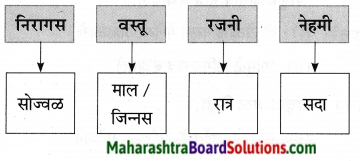
कृती 4: स्वमत
बंडूनानांची पत्नी त्यांना न जुमानता सर्व दागिने घालून नाटकाला गेली, हे तुम्हाला योग्य वाटते का?
उत्तरः
बंडूनानांची पत्नी त्यांना न जुमानता दागिने घालून नाटकाला गेली, हे माझ्या मते योग्यच होते. बंडूनाना गावात आलेल्या नाटकमंडळींचे ‘सुभद्राहरण अथवा चौर्यविपाक’ हे नाटक पाहावयास आपल्या कुटुंबासमवेत गेले. बंडूनाना नेहमीच आपल्या पत्नीला दागिने घालण्यासाठी नकार देत असत. याही वेळी ते नको म्हणत असताना त्यांची पत्नी त्यांना न जुमानता सर्व दागिने घालून नाटकाला गेली. त्याच रात्री चोरांनी बंडूनानांच्या घरातील सर्व माल लंपास केला. फक्त बंडूनानांच्या पत्नीच्या हौशीनेच त्यांच्या मिळकतीचा (दागिने) बचाव केला. झालेल्या चोरीत हे दागिने तेवढेच वाचले.
कुलूप Summary in Marathi
लेखकाचा परिचय:
नाव: श्रीपाद कृष्ण कोल्हटकर
कालावधी : 1971-1934
समीक्षक, लेखक, कवी, नाटककार, कथाकार, कादंबरीकार. ‘मूकनायक’, ‘गुप्तमंजूष’, ‘मतिविकार’, ‘प्रेमशोधन’ इत्यादी नाटके; ‘दुटप्पी की दुहेरी’, ‘शामसुंदर’ इत्यादी कादंबऱ्या; ‘गीतोपायन’ हा काव्यसंग्रह प्रसिद्ध.

प्रस्तावना:
‘कुलूप’ हा पाठ लेखक श्रीपाद कृष्ण कोल्हटकर यांनी लिहिला आहे. स्वभावनिष्ठ व प्रसंगनिष्ठ विनोदाचा अतिशय चपखलपणे वापर, हे प्रस्तुत पाठाचे खास वैशिष्ट्य आहे. बंडूनानांच्या कुलपांच्या हव्यासापायी त्यांच्यावर अनेक चमत्कारिक प्रसंग उद्भवतात, याचे वर्णन प्रस्तुत पाठात विनोदी शैलीत लेखकांनी केले आहे.
‘Kulup’ is written by Shripad Krishna Kolhatkar. The use of behavioural and situational humour is a speciality of this write up. This write up narrates about situations created in Bandunana’s life due to his obsession of locks.
शब्दार्थ:
- कुलूप – टाळे, (a lock)
- शौक – छंद (a hobby)
- संग्रहालय – संग्रहस्थान (a museum)
- कपाट – a cupboard
- नाकेबंदी – a blockade
- डाका – दरोडा (robbery)
- हव्यास – उत्कट इच्छा (greed, obsession)
- प्रसंग – घटना (an incident)
- कुटुंब – परिवार (a family)
- किल्ली – चावी (a key)
- कोठी – धान्यागार (a granary)
- लोहार – लोखंडाचे काम करणारा (a blacksmith)
- दुर्घट – अवघड (difficult)
- गृहस्थ – व्यक्ती, प्रापंचिक पुरुष (a person, gentleman)
- मानी – अभिमानी (proud)
- हकीगत – हकिकत, बातमी (news, narrative)
- घुस्सा – राग (anger)
- अनर्थ – मोठे संकट
- गुदरणे – ओढवणे
- विधिनिषेध – अमुक करू नये याबाबतचे नियम
- विश्वासू – भरवशाचा (trustworthy)
- नोकर – नोकरी करणारा (a servant)
- कुचकामी – अगदी निरुपयोगी (useless)
- अक्षरशत्रू – अक्षरशून्य (illiterate)
- हर्षित – (हर्षभरित) आनंदित (very happy, ecstasic)
- कल्पक – नवनवीन कल्पना काढण्यात तरबेज / शोधक, योजक (resourceful)
- अकल्पित – अनपेक्षित (unexpected)
- उत्तेजन – प्रोत्साहन (encouragement)
- आश्रय – आधार (support)
- कोतवाल – पोलिसांचा मुख्य अधिकारी (the chief police constable)
- चमत्कार – आश्चर्यकारक गोष्ट (a miracle, a wonder)
- जिन्नस – वस्तू (an item)
- चावडी – (येथे अर्थ) पोलीस चौकी (a police station)
- प्रयोग – प्रत्यक्ष क्रिया (an experiment)
- निर्भय – न घाबरणारा (brave)
- टोमणा – उपरोधिक शेरा (taunt)
- सुदैवाने – नशिबाने (luckily)
टिपा:
- जानवे – यज्ञोपवित (ब्राह्मण, क्षत्रिय, वैश्य या ज्ञातीतील मुलांच्या मुंजीच्या वेळी पवित्र चिन्ह म्हणून त्याच्या गळ्यात डाव्या खांदयावरून उजव्या खांदयाखाली धारण करावयाचे पवित्र सूत)
- वसुधैव कुटुंबकम् – ‘सारे विश्वच माझे घर’ अशी भावना, संस्कृत सुभाषित
- एडिसन – महान अमेरिकी संशोधक तसेच व्यवसायी. फोनोग्राफ आणि विद्युत दिव्याबरोबरच अनेक शोध लावले.
- ‘सुभद्राहरण अथवा चौर्यविपाक’ – एक नाटक
- आर्यभूमि – भारतभूमी

वाक्प्रचार:
- नजरेस पडणे – दृष्टीस पडणे
- हाडे खिळखिळी होणे – खूप मार लागणे
- स्वाधीन करणे – हवाली करणे
- स्तुती करणे – प्रशंसा करणे
- घुस्सा होणे – रागावणे
- डोळे पांढरे होणे – अतिशय घाबरणे
- तिळपापड होणे – रागराग करणे, संताप होणे
